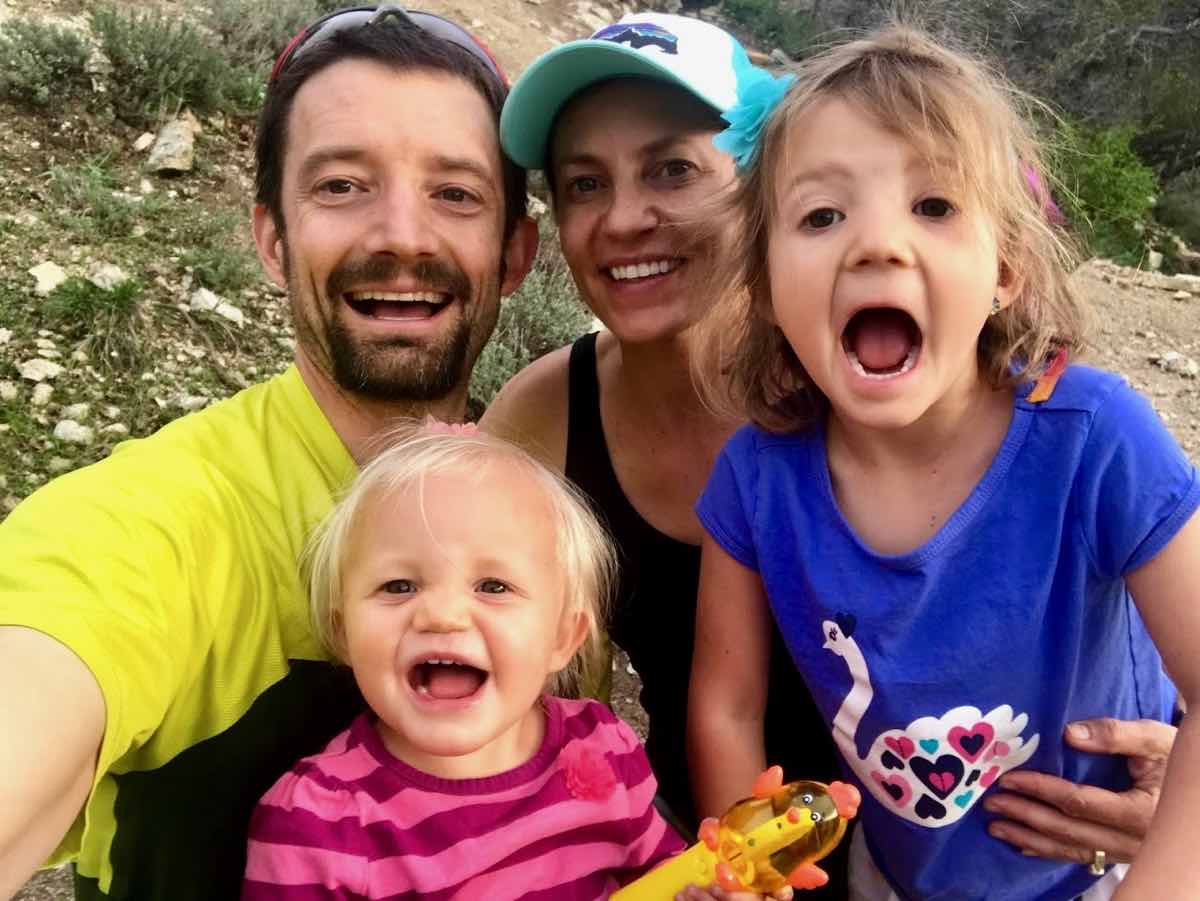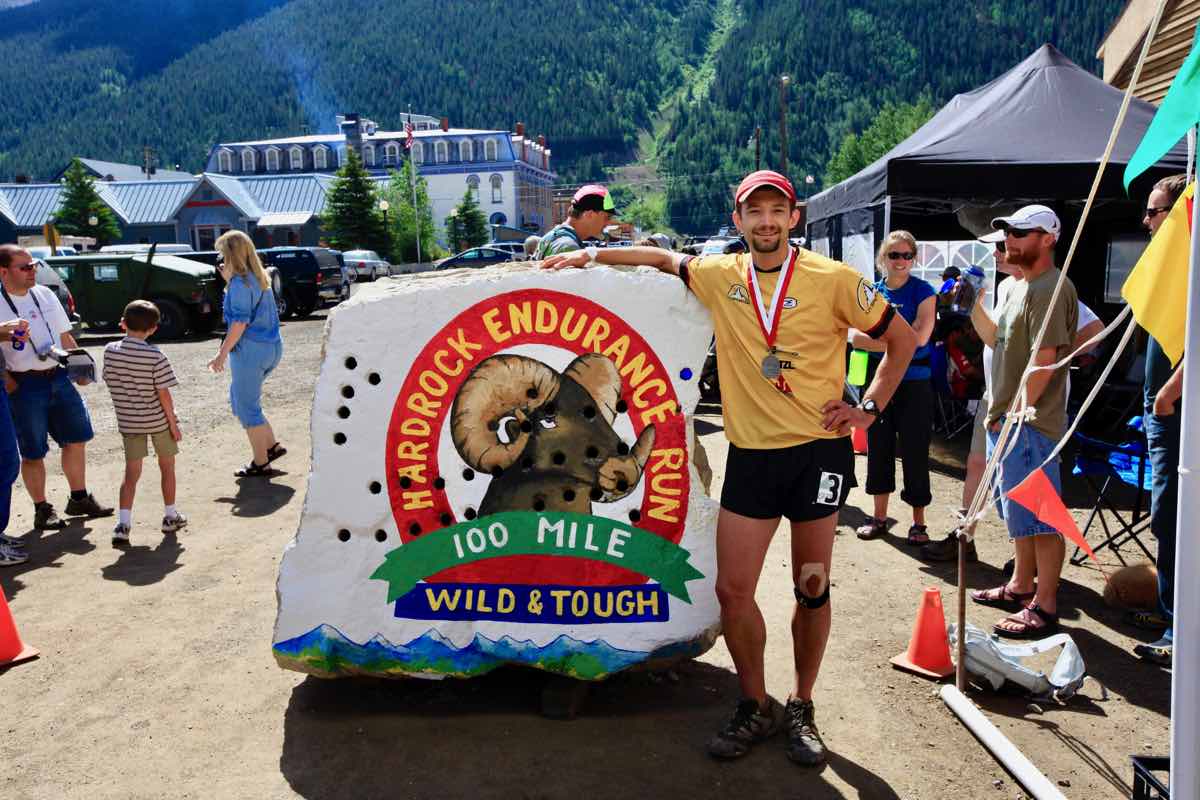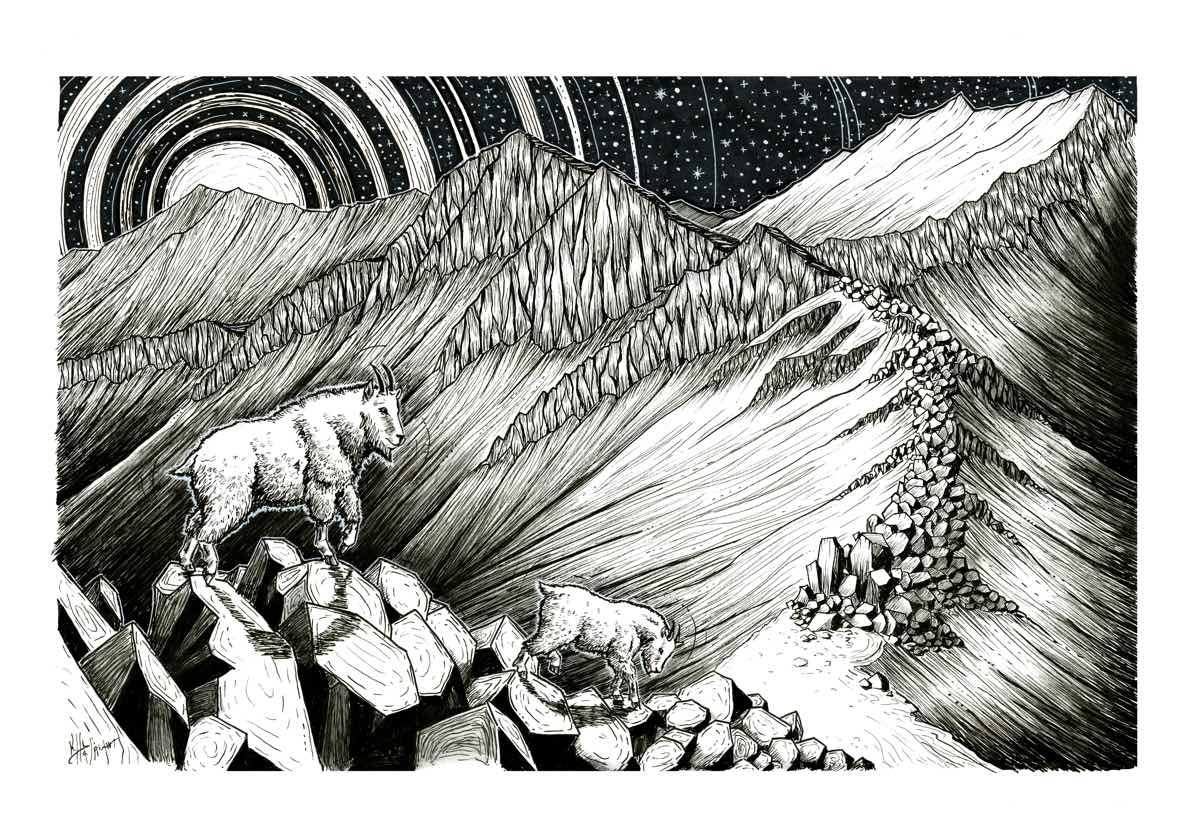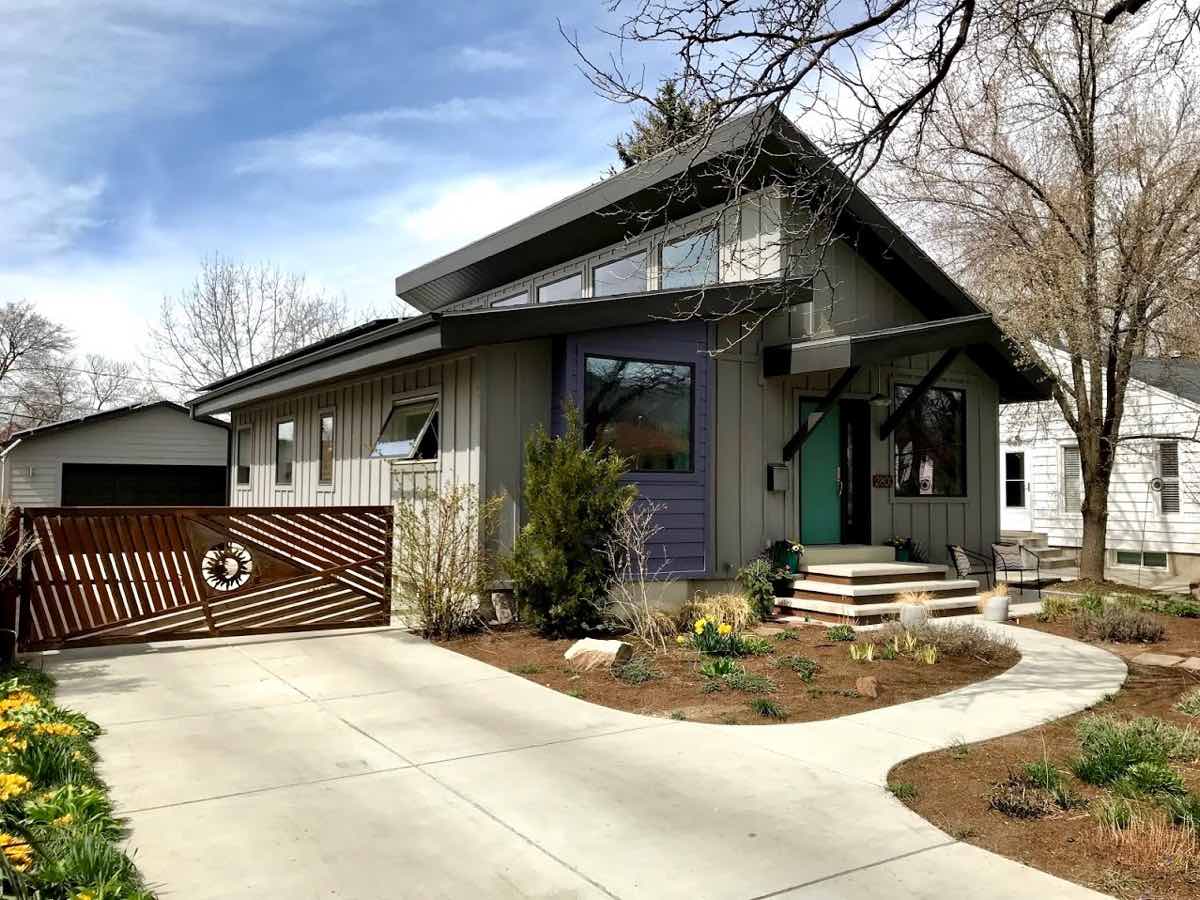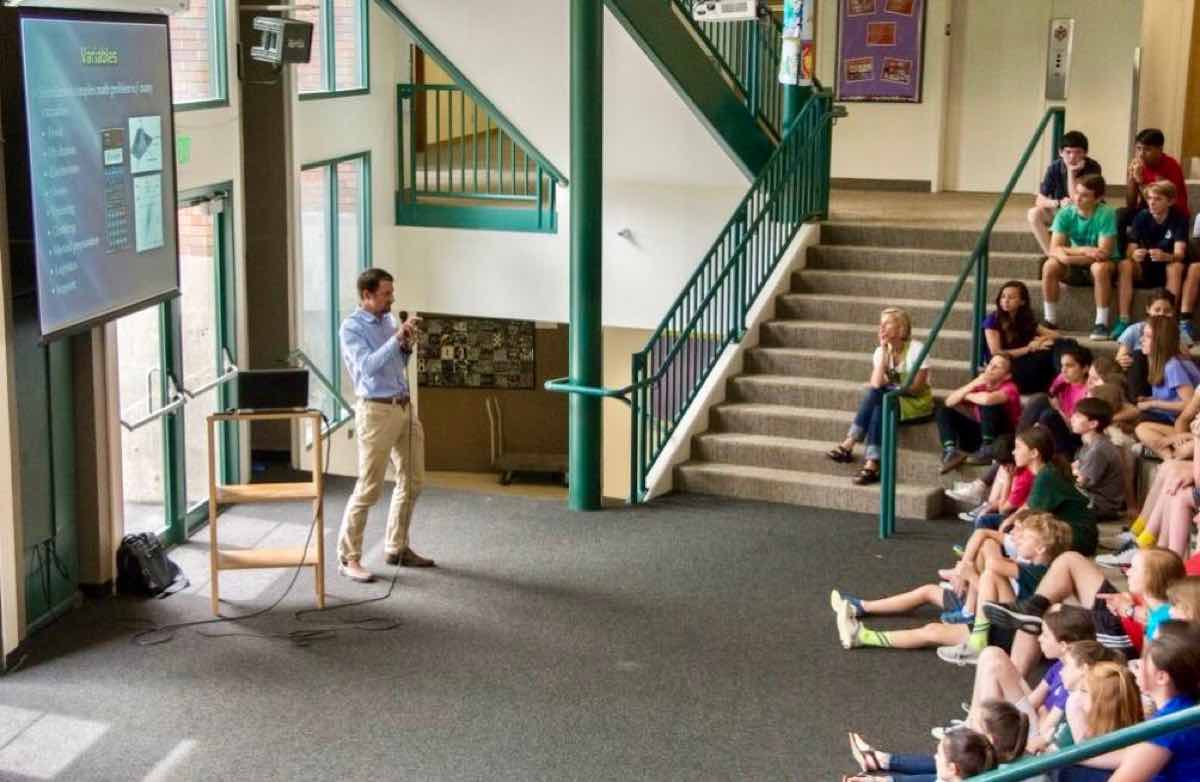To put it lightly, Jared Campbell is a prolific, inspirational, and ingenious endurance athlete and environmentalist. Among his accomplishments, Campbell is the sole three-time finisher of the Barkley Marathons, he founded a trail running event that supports clean-air initiatives, and he has rebuilt a home to be net positive and teaches others how to do it affordably, too. If it were not for his humility, perhaps more people would know the breadth of Campbell’s philanthropic climate work, as well as his self-blueprinted adventures.
“Jared operates on a different level than most of the rest of the world. He balances a very demanding career as an engineer, a world-class level of endurance athleticism, and work in conservation and the environment. He somehow manages to accomplish all of this in the same 24-hour day that the rest of us live in,” said Campbell’s friend and adventure partner, Luke Nelson. “Jared is well known for leaving work on a Friday and knocking out some huge endurance feat in time to roll into work on Monday, no worse for the wear. I would say he has probably traveled more miles and vertical via the light of a headlamp than just about anyone else on the planet as he squeezes every bit of life out of the day.”
Campbell’s early athletic pursuits actually revolved around rock climbing. He grew up in Olympus Cove, on the eastern side of Salt Lake City, Utah and at the foot of Mount Olympus, a local peak. A cousin introduced him to the sport at age 12 and he quickly had a self-proclaimed “climbing addiction.” Throughout middle and high school, he frequented Rockreation, a climbing gym where the community was tight-knit and small.
“I didn’t have the normal high-school experience. The minute I was done with academics, I was in a car to go climb,” said Campbell. “I knew everyone at the gym and immediately made awesome friends, who were mostly older than me and took me under their wing. It allowed me to go travel and my parents were very supportive of me.”
His passion branched into being a rock-climbing instructor and route setter. This took him all over the U.S. and overseas—including to Europe, Thailand, and New Zealand—for climbing work and adventures. Soon his climbing expanded into longer routes and big-mountain link-ups, efforts that might take 20 hours or more.
Campbell’s climbing also led him to his wife, Mindy, another exceptional climber and Salt Lake City local. The couple met in college and, initially as friends, adventure traveled a ton to climb in Mexico and around the U.S.
“In the beginning, she was dating one of my friends or I was dating someone else. Timing eventually worked out, the stars aligned, and one thing led to another when we were in El Potrero Chico, Mexico, a famous climbing area. Now, we’ve been married for nine years,” said Campbell. Together, the pair have two daughters, a five year old named Phoebe and a three year old named Ruby. “Nine months after our first child, my wife, who is a really talented ultrarunner, did the Bear 100 Mile. She’d pass people, breastfeed on the side of the trail, and then catch up to them. The Bear 100 was probably the hardest thing on her—physically and also the emotional side of having a child and doing it. She’s the toughest person I know. Now, after our second child, she prioritizes climbing with the little bit of time she has,” said Campbell.
Around the time when Campbell met his wife, in college, he was also introduced to long-distance running. Campbell was a full-time mechanical engineering student at the University of Utah. He explains, “I worked as a research assistant at a lab in the engineering department with a professor of mine, who is still a good friend today and who was about to run the Wasatch Front 100 Mile. I thought it sounded horrible. I was like, ‘I promise you, I will never do that.’ I went home that day and thought, I rejected that idea confidently and quickly. Then I became intrigued that I had eschewed the idea so abruptly. I thought, Taking 20 to 25 hours to run the Wasatch 100, that’s not too much different, in terms of time, from what I’m doing.”
He decided to run the Wasatch 100 the following year, in 2003, at 24 years old. To prepare, he ran a handful of shorter races, including the Squaw Peak 50 Mile. He says it was tougher than nails to finish that first 100-mile distance.
“That first 100 miler blows your mind and body at same time. You reach really deep lows that you don’t have the background or expertise to know you can come back from. Your first 100 is also really transformative. I learned that I might feel terrible, but if I keep going, things will turn around. I can apply that framework to every pursuit after that. When you practice it for years and years, that mentality becomes second nature,” explained Campbell.
Simply said, Campbell has become an expert at navigating highs and lows. Beyond Barkley, he’s a 10-time Hardrock 100 finisher. He first ran the race in 2004, the year after his first 100 miler, and later won, in 2010. A handful of his most memorable, noteworthy race finishes also include the challenging Ronda dels Cims in Andorra and the Plain 100 Mile in Washington state.
“The Plain 100 race name is intentionally boring. It’s a tough race and it brings in self-sufficiency and route finding, but it’s on trails and it’s not marked,” said Campbell, who was attracted to Barkley for all the same qualities. “I seem to have an ability to move faster than most people in complicated terrain. When there are variables, like unmarked trails and tricky navigation, I get more excited. When the challenge becomes bigger than running down the trail or following markers, I get interested,” said Campbell. He cracked the code of Barkley, finishing in under the 60-hour time limit in 2012, 2014, and 2016.
“I love Barkley, because it’s its own type of event. Hardrock stays the same and you try to get faster. Barkley morphs to get harder every year. I always just want to finish, because it will be harder than the last time I finished. It’s super painful and challenging, but it’s because of those things that it becomes so rewarding and a deep burn in your soul. Those experiences are cool—they make you who you are. I think that’s why a lot of people in our crazy sport keep coming back to the things that push us,” said Campbell.
However, the majority of Campbell’s endurance projects are backyard adventures, including routes of his own design in the mountains and desert of Utah. He is a guru at figuring out the logistics for single-push and multi-day efforts.
“Jared’s approach to adventure is more detailed than anyone else I know. He might blush at me going on about his incredible skill at developing spreadsheets, but they are literal works of art; formulas to calculate water consumption based on effort and temperature, checklists of gear and alternate gear, detailed maps with dozens of colored routes indicating alternatives and exits. One of the main reasons Jared is so successful at completing difficult and remote routes is his preparation,” said Nelson, who this summer set the men’s fastest known time (FKT) on the Wasatch Ultimate Ridge Linkup, a line Campbell created in 2004 that he affectionately calls the WURL.
The WURL features scrambling, boulder-hopping, and rugged trails along an exposed, high-altitude ridge that circumnavigates Little Cottonwood Canyon in Utah’s Wasatch Mountains. The 36-mile route tags 21 official peaks and goes over a few more bumps, says Campbell, totaling 18,000 feet of climbing.
“Jared is incredibly stoked and supportive for anyone attempting the route. The first time I tried it in 2018, he continued to send me supportive texts, which gave me the extra boost I needed when I was up there, especially at night while struggling alone. When I finished the route again this year, he was one of the first people to shoot me a message congratulating me. It meant so much,” said Kelly Halpin who set a then women’s FKT on the WURL this summer. (Alexis Crellin has since become the women’s WURL FKT holder.)
Halpin said, “The WURL is one of the most aesthetic ridgelines I’ve ever seen. I absolutely love the route. To be the first to imagine doing the WURL in its entirety, in one push, says a lot about Jared as not only an athlete but also as a visionary. Nothing is possible until someone makes it possible.” Halpin, who is also an artist, created an illustration of the ridge after her most recent completion. Jared saw her share the artwork on social media and snagged the original.
“Kelly crushed the WURL, and I bought the artwork she did of a specific point on the ridge, three quarters of the way into the route, and it’s what you see back to the east. It’s a vantage point that’s a beautiful spot on course, but you can tell it’s her experience,” said Campbell.
At first, the WURL didn’t attract much attention, recalled Campbell. Ten people finished the horseshoe in its first decade of existence. Then, between 2014 and 2019, more than three dozen additional people have completed it, some multiple times.
“The WURL is becoming more popular, like a badge of honor if you enjoy ridges or live in and around the area. I never thought the WURL would get that way when I started it. It’s in that blurry area between what a climber and runner might do. There are not a lot of people who have enough skill in both categories or who would want to do it. But, our sports are blurring a lot more, between people with the endurance of long-distance running and skills in technical terrain,” said Campbell.
One of his less-famous, most-favorite self-written endurance events is a non-traditional triathlon in Zion National Park which he called Zironman, with canyoneering, scrambling, and running for a 55-mile push that took he and two friends about 28 hours to complete. Some of this other endurance pushes have included the Uinta Highline Trail, a 22-hour run that finished a little over an hour from his front door this past August. He also linked up all of Idaho’s 12,000-plus-foot peaks and Utah’s 13,000-plus-foot peaks, in two separate outings with Nelson. And he’s finished the Nolan’s 14 line in Colorado, a route linking fourteen 14,000-plus-foot mountains, an incredible three times.
Campbell’s training for Barkley led him to launch Running Up For Air (RUFA), an endurance-mountain challenge created to raise money in support of the fight for improved air quality for those who live along the Wasatch Front. Barkley takes place in April, so runners need to start training over the winter. “You’d better be hitting it hard in the winter. I was running a lot in January and February, and that often means in Salt Lake City that you’re running in really bad air. I thought, I’m going to kill myself out here, and I started to run in a gas-mask thing to protect myself from the bad air. I was getting sick. I was running seven days a week and thinking about how bad it had to be for my health. It forced me to educate myself,” said Campbell. “I could go up and down these peaks and no one has to know about it, or I could turn this into something constructive or positive.”
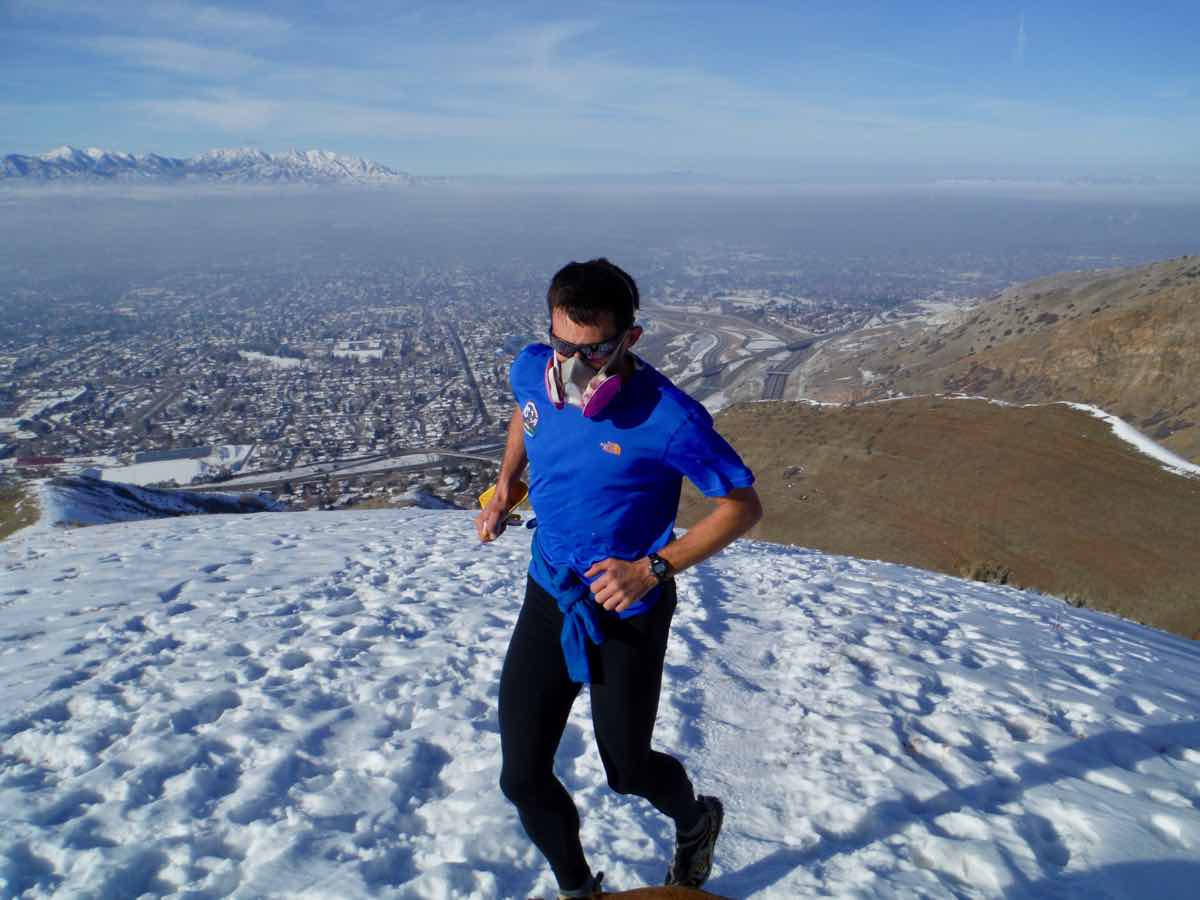
Running with a respirator during Salt Lake City’s poor air quality, which can be seen in the background.
He discovered the non-profit Breathe Utah and asked if he could raise money for the organization. In an unofficial race, he pinged friends and family to help him fundraise money for completed laps up the peaks. Year one, in 2012, he collected $5,000.
“I have been going to Salt Lake City to participate in the RUFA events since before they were officially RUFA. At first, Jared ran up and down Grandeur Peak to get attention for local air-quality groups. A few friends joined him for a few laps—none of us could keep up with him for more!” said Nelson. After a few years, RUFA was formalized and expanded to various locations and events in Utah, Colorado, and Chamonix, France. Climbing events were also created. Each event supports a regional organization that does work in legislation and education for air quality and health.
Continues Nelson, “Perhaps the greatest reflection of his character is that Jared created these events as a tool to motivate his community to be better involved in critical environmental issues. He doesn’t do it gain accolades or attention for himself, but rather to shift the needle in a meaningful way. He does much more than most would know. Jared is passionate about lowering the impact of homes, including having built a net-zero home, and consulting on countless other remodels and new construction. Lessening his impact on the planet is critical to Jared, and he wants to clear the path for others to easily be able to do so as well.”
In 2011, Jared and Mindy decided to rebuild their then home to be solar-powered and positive energy, meaning that it produces more energy than what’s being consumed in it. “I got interested in net-zero living, because the Salt Lake Valley often has the worst air quality in the nation during the winter. It’s hard to live here and not think about it. Most people who think about it, complain about it. I wanted to go a step further. I thought, How can I use my home to create the energy I use? I broke it down like an engineering problem: how can I design a home where it doesn’t need a lot of energy? How can I create that energy? How do I address my energy needs? We all consume energy in our lives,” said Campbell.
The next step of their project was to share what they learned with others.
“We said the project wouldn’t be finished until we collected and measured how we did it. A year later, we gathered the data and worked with Utah Clean Energy[, another non-profit,] to share the message with a broad audience. I hosted presentations and seminars in Salt Lake City, in classrooms and where I work about how to build this type of home affordably,” said Campbell. After one presentation, a developer said to Campbell that they didn’t know this could be done cost-effectively and that there was a market for it. Now, the developer’s company, Living Zenith, only builds net-positive communities, using the principles of Campbell’s home. Since then, the Campbells have sold this Salt Lake City home, bought an existing home in nearby Park City, and are in the process of converting their Park City home to be net positive, too.
Over the years, Campbell has traveled a ton and loved it, but he’s also migrated more toward local endurance pursuits. “All of us athletes need to ask ourselves, How do I still do the things I love and try to do it more locally? We have an amazingly big footprint when we travel around. It’s been fun for me to focus on doing things in the state of Utah,” said Campbell. “It’s fun to get to know my local area and backyard better. We don’t always have to travel many hours to have an adventure.”
Call for Comments (from Meghan)
Calling all Jared Campbell stories! Leave a comment to share your story of adventuring, climbing, running, or working on environmental issues with Jared.


